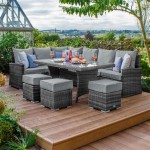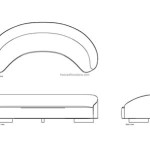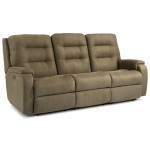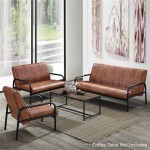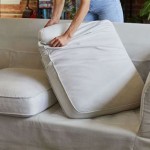```html
Blocks To Raise Sofa Height: A Comprehensive Guide
The height of a sofa significantly impacts comfort, ergonomics, and the overall aesthetic of a living space. A sofa that is too low can be difficult to get in and out of, especially for individuals with mobility issues. Furthermore, it might not align well with existing furniture or the architectural style of the room, leading to a visually unbalanced and potentially uncomfortable environment. Conversely, a sofa that is too high can feel overwhelming in a smaller space or create an awkward viewing angle for televisions and conversations. Utilizing blocks to raise sofa height presents a practical and cost-effective solution to address these discrepancies.
This article explores the reasons for raising sofa height, the types of blocks available, factors to consider before installation, and a step-by-step guide to the process. It aims to provide readers with the necessary information to make informed decisions regarding adjusting the height of their sofas using blocks.
Reasons for Raising Sofa Height
There are several compelling reasons to consider raising the height of a sofa. These reasons can range from functional needs to aesthetic considerations.
Improved Ergonomics and Accessibility: One of the primary reasons for raising a sofa is to improve its ergonomics. A lower sofa can strain the back and knees when sitting down and standing up. Raising the height makes it easier to transition between sitting and standing positions, reducing strain on joints and muscles. This is particularly beneficial for elderly individuals, people with joint pain, or those recovering from injuries. Higher sofa elevation can also improve circulation and reduce discomfort associated with prolonged sitting.
Enhanced Visual Appeal: A sofa that is too low can make a room feel disproportionate. Raising the sofa can help balance the space, making it appear more visually appealing and harmonious. The increased height can create a more spacious feel, particularly in smaller rooms, by allowing more of the floor to be visible. Furthermore, raising the sofa can better align it with other furniture pieces in the room, such as coffee tables and side tables, creating a cohesive and aesthetically pleasing arrangement.
Facilitating Cleaning: A higher sofa provides increased clearance beneath it, making it easier to clean underneath. This is particularly useful for homes with pets or individuals with allergies, as it allows for more thorough vacuuming and dust removal. The increased accessibility can also simplify the process of retrieving lost items that may have rolled under the sofa.
Accommodating Robotic Vacuum Cleaners: The advent of robotic vacuum cleaners has further highlighted the importance of adequate clearance beneath furniture. Raising the sofa to a sufficient height allows these devices to effectively clean beneath it, reducing the need for manual vacuuming in hard-to-reach areas.
Types of Sofa Raising Blocks
Several types of blocks are available for raising sofa height, each with its own characteristics and suitability for different sofas and floor types. The selection of the appropriate block depends on factors such as the weight of the sofa, the type of legs it has, and the desired height increase.
Wooden Blocks: Wooden blocks are a popular choice due to their durability and aesthetic appeal. They are available in various shapes, sizes, and finishes, allowing them to blend seamlessly with the existing furniture and décor. Wooden blocks are typically made from hardwoods such as oak, maple, or beech, ensuring strength and stability. They may be unfinished, stained, or painted to match the sofa legs or other furniture in the room. Wooden blocks are suitable for sofas with a variety of leg types, including straight legs, tapered legs, and bun feet. However, it is important to select blocks that are sufficiently wide and sturdy to support the weight of the sofa.
Plastic Blocks: Plastic blocks offer a more lightweight and cost-effective alternative to wooden blocks. They are often made from high-density polyethylene or polypropylene, providing sufficient strength and durability. Plastic blocks are available in various shapes and sizes, and some models feature a non-slip surface to prevent the sofa from sliding. They are particularly suitable for sofas with lighter frames or for temporary height adjustments. However, plastic blocks may not be as aesthetically pleasing as wooden blocks and may not be suitable for all décor styles.
Metal Blocks: Metal blocks provide a robust and industrial aesthetic. They are typically made from steel or aluminum, offering exceptional strength and stability. Metal blocks are suitable for heavier sofas or for applications where maximum durability is required. They may feature a powder-coated finish to prevent rust and corrosion. Metal blocks are often used in modern or minimalist décor styles. However, they may not be as versatile as wooden blocks in terms of matching existing furniture.
Adjustable Blocks: Adjustable blocks offer the flexibility to customize the height of the sofa to precise specifications. These blocks typically consist of two or more interlocking pieces that can be adjusted to achieve the desired height. Adjustable blocks are particularly useful for situations where the floor is uneven or where a specific height adjustment is required to align the sofa with other furniture. They are available in various materials, including wood, plastic, and metal. However, adjustable blocks may be more expensive than fixed-height blocks.
Risers with Embedded Grips/Protection: Some blocks include embedded grips or protective features on the top and bottom surfaces. The top grip prevents the sofa leg from slipping off the block, while the bottom protection safeguards the flooring from scratches or damage. These blocks are especially recommended for hard floors like wood, tile, or laminate.
Factors to Consider Before Installation
Before installing sofa raising blocks, it is crucial to consider several factors to ensure a safe, stable, and aesthetically pleasing outcome. These factors include sofa weight capacity, leg type compatibility, floor surface considerations, and overall stability.
Sofa Weight Capacity: It is essential to select blocks that can safely support the weight of the sofa and its occupants. Overloading the blocks can lead to structural failure, potentially damaging the sofa or causing injury. Consult the sofa's manufacturer specifications or consult with a furniture professional to determine the appropriate weight capacity for the blocks. If the weight capacity isn't clear, err on the side of caution and select blocks with a higher capacity.
Leg Type Compatibility: The type of sofa legs will influence the selection of appropriate blocks. Some blocks are designed specifically for straight legs, while others are better suited for tapered legs or bun feet. Ensure that the blocks are compatible with the shape and size of the sofa legs to provide a secure and stable connection. If the legs are unusually shaped, consider using custom-made blocks or consulting with a furniture professional.
Floor Surface Considerations: The type of flooring in the room will affect the choice of blocks and the installation method. For hard floors such as wood, tile, or laminate, it is important to use blocks with a non-slip surface or to add felt pads to the bottom of the blocks to prevent scratches and damage. For carpeted floors, blocks with a wider base may be necessary to provide adequate stability. The blocks should also be made of a material that won't stain or damage the carpet.
Overall Stability: Once the blocks are installed, it is crucial to assess the overall stability of the sofa. Ensure that the sofa is level and does not wobble or rock. If necessary, use shims to fine-tune the height of individual blocks and achieve a perfectly level surface. Regularly inspect the blocks to ensure that they remain securely in place and that there are no signs of wear or damage.
Aesthetic Harmony: Carefully consider the aesthetic impact of the blocks on the overall appearance of the room. Choose blocks that complement the style and color of the sofa and other furniture. If desired, paint or stain the blocks to match the sofa legs or other elements in the room.
Safety: Confirm that the height increase doesn't create a tripping hazard or obstruct pathways. Especially in households with children or elderly individuals, ensure the raised sofa doesn't pose a safety risk.
Consider the Coffee Table: Raising the sofa also necessitates consideration of the coffee table height. The coffee table should remain at a comfortable and proportional height relative to the raised sofa. This might require adjusting or replacing the coffee table to maintain ergonomic comfort and visual harmony.
Doorways and Clearances: Ensure that raising the sofa will not impact moving the sofa through doorways or other tight clearances within the home. Measure doorways and pathways to confirm that the increased height allows for unobstructed movement of the sofa if needed in the future.
Potential for Damage: Carefully assess the risks of moving the sofa during the installation process to avoid damaging the sofa itself, surrounding walls, or the flooring. Utilize appropriate moving equipment and assistance to minimize the risk of accidents.
Step-by-Step Guide to Installing Sofa Raising Blocks
Installing sofa raising blocks is a relatively straightforward process, but it requires careful planning and execution to ensure a safe and successful outcome. The following steps provide a comprehensive guide to the installation process.
Gather Necessary Materials: Before starting the installation process, gather all the necessary materials, including the sofa raising blocks, a measuring tape, a level, shims (if needed), felt pads (if needed), and a helper. Having all the materials readily available will streamline the process and prevent delays.
Prepare the Area: Clear the area around the sofa to provide ample space for maneuvering. Protect the flooring with blankets or drop cloths to prevent scratches and damage. Remove any obstacles that may impede the installation process. This preparation helps prevent accidents and makes the installation more efficient.
Lift the Sofa: With the help of a helper, carefully lift one side of the sofa at a time. Use proper lifting techniques to avoid straining your back. Support the lifted side of the sofa with temporary supports such as wooden blocks or furniture dollies. Ensure that the sofa is stable and secure before proceeding.
Position the Blocks: Place the sofa raising blocks under each leg of the sofa. Ensure that the legs are properly aligned with the blocks and that the blocks are securely positioned on the floor. If using adjustable blocks, adjust the height to the desired level. If using felt pads, attach them to the bottom of the blocks before positioning them. Double-check that the blocks are correctly positioned to prevent instability.
Lower the Sofa: Slowly and carefully lower the sofa onto the blocks. Ensure that the legs are properly seated on the blocks and that the sofa is stable. Remove the temporary supports and check the overall stability of the sofa. Adjust the blocks or add shims as needed to achieve a perfectly level surface. This is a critical step to ensure the sofa is safe and comfortable to use.
Test the Stability: Once the sofa is lowered onto the blocks, test its stability by gently rocking it from side to side and front to back. If the sofa wobbles or rocks, adjust the blocks or add shims as needed to stabilize it. Ensure that the sofa is level and secure before allowing anyone to sit on it. This step is essential for ensuring the safety of users.
Final Adjustments: After testing the stability of the sofa, make any necessary final adjustments. Check the alignment of the sofa with other furniture in the room and adjust the position as needed. Clean up any debris or materials left over from the installation process. Step back and assess the overall appearance of the room to ensure that the raised sofa integrates seamlessly with the existing décor.
Ongoing Maintenance: Periodically inspect the blocks to ensure that they remain securely in place and that there are no signs of wear or damage. Tighten any loose screws or fasteners. Replace damaged blocks as needed. Clean the blocks regularly to prevent the accumulation of dust and dirt. Proper maintenance will prolong the life of the blocks and ensure the continued stability and safety of the sofa.
```
11 Best Wooden Blocks To Raise Furniture Collection Design Sofa Styling

Gosche Bed Risers Wood Blocks 1 Inch Circle Furniture Height Extenders Lifts For Sofa Couch Desk Table Base Walnut Color Pack Of 4 Com

What Can I Use To Make My Sofa Higher Hunker Diy Furniture Risers Low Bed

How To Raise The Height Of My Sofa

Sofa Raisermultifit

Gosche Bed Risers Wood Blocks 1 Inch Circle Furniture Height Extenders Lifts For Sofa Couch Desk Table Base Walnut Color Pack Of 4 Com

Gosche Bed Risers Wood Blocks 1 Inch Circle Furniture Height Extenders Lifts For Sofa Couch Desk Table Base Walnut Color Pack Of 4 Com

The Ergonomic Sofa New York Times
Your Guide To Measuring Sofa Dfs

8pcs Black Bed Risers Set Chair Furniture Raisers Heavy Duty Lift Blocks Adjustable Elephant Feet To 8 5 Or 3 Inches In Height For Home Couch Sofa Table Com

